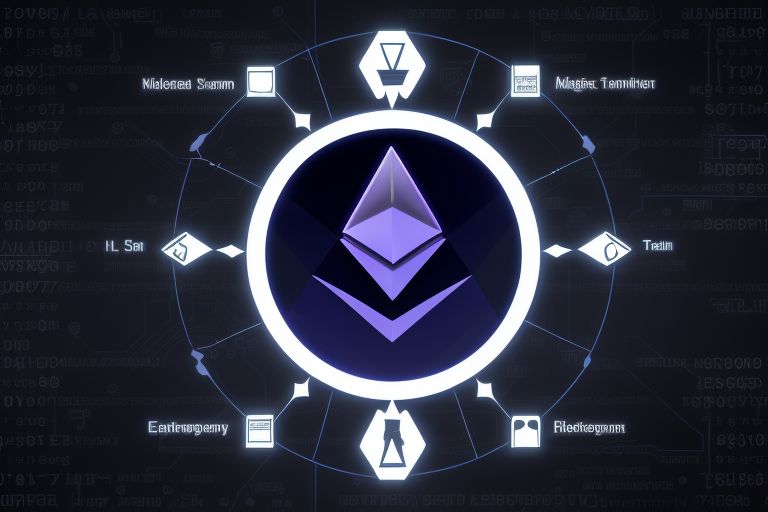What is Peer-to-Peer Trading?
Peer-to-peer trading, often abbreviated as P2P, is a decentralized exchange of goods or services directly between individuals. In a P2P trading platform, there is no intermediary, allowing users to interact with each other directly.
The Rise of Peer-to-Peer Trading
In recent years, peer-to-peer trading has gained popularity due to its efficiency and cost-effectiveness. With the advent of digital platforms, individuals can now easily connect with others to buy, sell, or trade items without the need for traditional middlemen.
Anonymity is a significant aspect of peer-to-peer (P2P) trading
P2P offering users increased privacy and discretion in their transactions. Here’s how anonymity intersects with P2P trading:
- Disintermediation: P2P trading platforms eliminate the need for intermediaries, such as banks or centralized exchanges, which often require users to disclose personal information for compliance purposes. By trading directly with other individuals, users can maintain a higher level of anonymity and control over their personal data.
- Pseudonymity: Many P2P trading platforms allow users to transact under pseudonyms or usernames, rather than revealing their real identities. This pseudonymous nature of P2P trading adds an additional layer of privacy, as users can engage in transactions without disclosing sensitive information such as their full name, address, or government-issued identification.
- Cryptocurrency Transactions: Cryptocurrencies are inherently pseudonymous, as transactions are recorded on public blockchains using cryptographic addresses rather than real-world identities. When conducting P2P trades involving cryptocurrencies, users can leverage the privacy features of certain cryptocurrencies, such as Monero or Zcash, to further obscure transaction details and enhance anonymity.
- Encrypted Communication: P2P trading platforms often incorporate encrypted communication channels to facilitate secure and private communication between buyers and sellers. Encrypted messaging features protect sensitive information and ensure that trade negotiations and transaction details remain confidential between parties.
- Location Independence: P2P trading enables users to engage in transactions from anywhere in the world, without being tied to a specific geographic location. This location independence adds another layer of anonymity, as users can access P2P trading platforms anonymously through virtual private networks (VPNs) or anonymizing technologies like Tor, concealing their true IP addresses and physical locations.
- Anonymous Payment Methods: Some P2P trading platforms support anonymous payment methods, such as cash deposits, gift cards, or peer-to-peer payment services, which do not require users to link their bank accounts or reveal their financial information. These anonymous payment methods allow users to conduct transactions without leaving a digital footprint or compromising their privacy.
- Privacy Enhancing Technologies: P2P trading platforms may incorporate privacy-enhancing technologies, such as zero-knowledge proofs or homomorphic encryption, to further safeguard user privacy and anonymity. These technologies enable users to prove the validity of transactions or execute computations without revealing sensitive information to third parties.
Overall, anonymity is a key feature of peer-to-peer trading, empowering users with greater privacy and discretion in their financial transactions. By leveraging pseudonymity, encrypted communication, cryptocurrency transactions, location independence, anonymous payment methods, and privacy-enhancing technologies, P2P trading platforms enable users to transact securely and privately without sacrificing their anonymity.
Benefits of Peer-to-Peer Trading
Peer-to-peer (P2P) trading offers a range of benefits for participants, making it an attractive option for buying, selling, and exchanging assets. Here are some of the key benefits of P2P trading:
- Decentralization: P2P trading operates without the need for intermediaries or centralized authorities, enabling direct interaction between buyers and sellers. This decentralization eliminates the need for third-party oversight and control, giving users greater autonomy and control over their assets.
- Accessibility: P2P trading platforms are often accessible to anyone with an internet connection and a compatible digital wallet, regardless of geographic location or socioeconomic status. This accessibility opens up global markets and facilitates cross-border transactions, enabling users to trade assets with individuals around the world.
- Lower Fees: P2P trading typically involves lower fees compared to transactions on centralized exchanges, which may charge fees for trading, withdrawals, and other services. By bypassing intermediaries and trading directly with other users, participants can avoid paying excessive fees and retain more of their funds.
- Privacy and Security: P2P trading offers enhanced privacy and security features compared to centralized exchanges, where users may be required to disclose personal information and entrust their funds to third-party custodians. With P2P trading, users retain control of their private keys and assets throughout the trading process, reducing the risk of hacking, theft, or unauthorized access.
- Flexibility: P2P trading platforms support a wide range of assets, including cryptocurrencies, fiat currencies, commodities, and securities, providing users with flexibility and choice in their trading activities. Participants can trade assets directly with each other and explore diverse investment opportunities without restrictions or limitations.
- Market Depth and Liquidity: P2P trading platforms often have deep liquidity pools and active user communities, facilitating efficient price discovery and execution of trades. With a diverse pool of buyers and sellers, participants can access competitive prices and execute trades quickly and easily, even for less liquid assets.
- Community Engagement: P2P trading fosters a sense of community and collaboration among participants, who often share insights, experiences, and trading strategies with each other. This community engagement creates a supportive environment for users to learn, grow, and participate in the broader ecosystem of decentralized finance (DeFi) and blockchain technology.
- Resilience to Downtime and Censorship: P2P trading platforms are inherently resilient to downtime and censorship, as they operate on decentralized networks and do not rely on single points of failure. This resilience ensures uninterrupted access to trading services and protects users from censorship or interference by third parties.
Overall, peer-to-peer trading offers numerous benefits for users, including decentralization, accessibility, lower fees, privacy and security, flexibility, market depth, community engagement, and resilience to downtime and censorship. As P2P trading continues to evolve and gain traction, it is expected to play an increasingly important role in shaping the future of finance and empowering individuals with greater financial sovereignty and inclusion.
How Does Peer-to-Peer Trading Work?
In a peer-to-peer trading system, users create listings for items they want to buy or sell. Other users can then browse these listings and directly contact the seller or buyer to negotiate terms. Once an agreement is reached, the transaction takes place directly between the two parties.
Peer-to-Peer Trading Platforms
There are various peer-to-peer trading platforms available to facilitate these transactions, such as Craigslist, Facebook Marketplace, and specialized platforms like Airbnb and Etsy. These platforms provide a convenient and secure environment for users to engage in peer-to-peer trading.
Risks of Peer-to-Peer Trading
Peer-to-peer (P2P) trading, while offering numerous benefits such as direct interaction between buyers and sellers and potentially lower fees, also comes with its own set of risks. Here are some of the key risks associated with P2P trading:
- Counterparty Risk: P2P trading exposes participants to counterparty risk, which is the risk that the other party may default on the trade or engage in fraudulent behavior. Unlike transactions on centralized exchanges where trades are facilitated by the exchange itself, in P2P trading, users rely on the honesty and integrity of their trading counterparties.
- Fraudulent Transactions: P2P trading platforms are vulnerable to fraudulent transactions, including scams, chargebacks, and identity theft. Malicious actors may attempt to deceive or manipulate unsuspecting users into sending funds without providing the agreed-upon goods or services, leading to financial losses.
- Security Risks: P2P trading often involves the exchange of digital assets or fiat currency directly between users, increasing the risk of security breaches and unauthorized access to funds. Users must take precautions to secure their digital wallets and personal information to mitigate the risk of hacking and theft.
- Lack of Regulation: Many P2P trading platforms operate in regulatory gray areas or without proper oversight, exposing users to legal and compliance risks. Without clear regulatory frameworks or consumer protections in place, users may face challenges in resolving disputes or seeking recourse in the event of fraud or misconduct.
- Price Volatility: P2P trading may be subject to price volatility, especially in markets with low liquidity or high demand. Fluctuations in asset prices can lead to unfavorable trading conditions, resulting in losses for participants who are unable to execute trades at desired prices.
- Transaction Delays and Disputes: P2P trading can be susceptible to delays and disputes, particularly when coordinating transactions between parties in different geographical locations or time zones. Disputes may arise over issues such as payment delays, delivery failures, or disagreements regarding the terms of the trade, leading to delays in completing transactions or potential financial losses.
- Liquidity Risks: P2P trading platforms may experience liquidity constraints, especially for less popular assets or during periods of market volatility. Limited liquidity can make it difficult for users to execute trades at desired prices or to find counterparties willing to participate in the market, potentially resulting in delays or unfavorable trading conditions.
Overall, while P2P trading offers opportunities for direct interaction and potentially lower fees, users should be aware of the associated risks and take appropriate precautions to protect themselves against fraud, security breaches, and other potential pitfalls. Conducting thorough due diligence, using reputable platforms, and implementing robust security measures can help mitigate the risks associated with P2P trading.
The Future of Peer-to-Peer Trading
The future of peer-to-peer (P2P) trading is poised for significant growth and innovation, driven by technological advancements, changing consumer preferences, and the evolving regulatory landscape. Here are some key trends and developments shaping the future of P2P trading:
- Decentralization and Blockchain Technology: P2P trading is increasingly leveraging blockchain technology and decentralized protocols to facilitate trustless transactions without the need for intermediaries. Decentralized exchanges (DEXs) and P2P trading platforms built on blockchain networks offer enhanced security, transparency, and censorship resistance, empowering users with greater control over their assets.
- Globalization and Market Access: P2P trading is breaking down geographical barriers and enabling access to global markets for participants around the world. With the rise of cross-border P2P trading platforms and the proliferation of digital assets, users can trade a wide range of assets, including cryptocurrencies, fiat currencies, commodities, and securities, across borders with ease.
- Tokenization of Assets: The tokenization of real-world assets, such as real estate, art, and securities, is opening up new opportunities for P2P trading. By representing ownership of assets as digital tokens on blockchain networks, P2P trading platforms can enable fractional ownership, increased liquidity, and more efficient trading of traditionally illiquid assets.
- Integration of DeFi Protocols: Peer-to-peer trading is increasingly integrating with decentralized finance (DeFi) protocols, allowing users to access a wide range of financial services, including lending, borrowing, derivatives trading, and yield farming, directly within P2P trading platforms. This convergence of P2P trading and DeFi is driving innovation and creating new opportunities for users to maximize the value of their assets.
- Regulatory Clarity and Compliance: As P2P trading continues to gain traction, regulators are paying closer attention to the space and working to establish clear regulatory frameworks to ensure consumer protection, market integrity, and compliance with anti-money laundering (AML) and know your customer (KYC) regulations. Regulatory clarity and compliance are essential for fostering trust and confidence in P2P trading platforms and promoting mainstream adoption.
- User Experience and Interface Design: The future of P2P trading will prioritize user experience and interface design to make trading platforms more intuitive, accessible, and user-friendly. Improved user interfaces, mobile applications, and educational resources will help onboard new users and streamline the trading process, making P2P trading more accessible to a wider audience.
- Institutional Participation: Institutional participation in P2P trading is expected to increase as institutional investors and financial institutions recognize the potential benefits of direct peer-to-peer transactions, such as reduced counterparty risk, lower fees, and greater liquidity. Institutional-grade P2P trading platforms and infrastructure will cater to the needs of institutional investors and facilitate larger-scale transactions in the P2P trading ecosystem.
Overall, the future of peer-to-peer trading is bright, with continued innovation, adoption, and integration driving the evolution of P2P trading platforms and ecosystems. As technology continues to advance and regulatory frameworks mature, P2P trading will play an increasingly important role in shaping the future of finance and democratizing access to global markets.
In conclusion, peer-to-peer trading offers a unique and innovative way for individuals to connect and engage in transactions directly. With its numerous benefits and potential for growth, P2P trading is undoubtedly a trend to watch in the evolving landscape of commerce and exchange.



